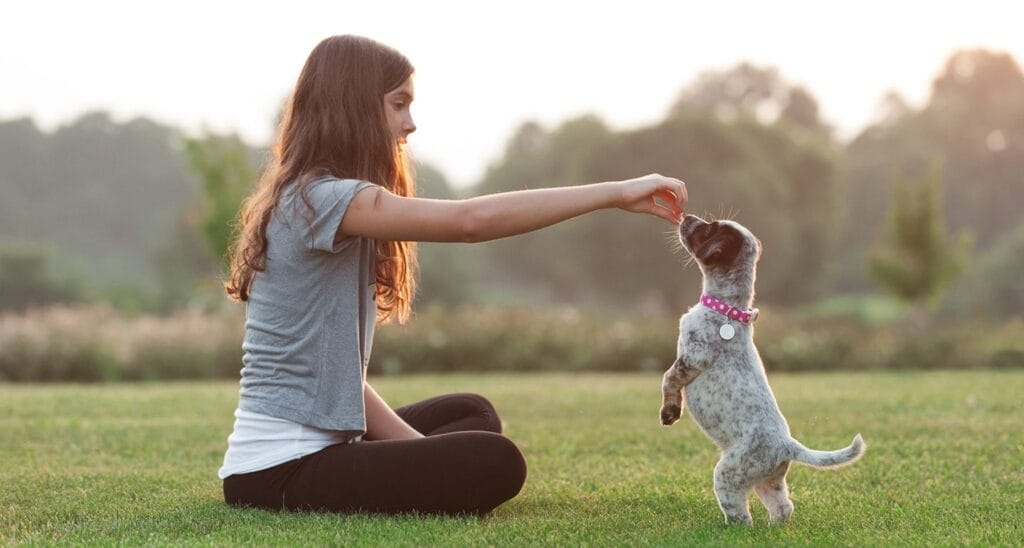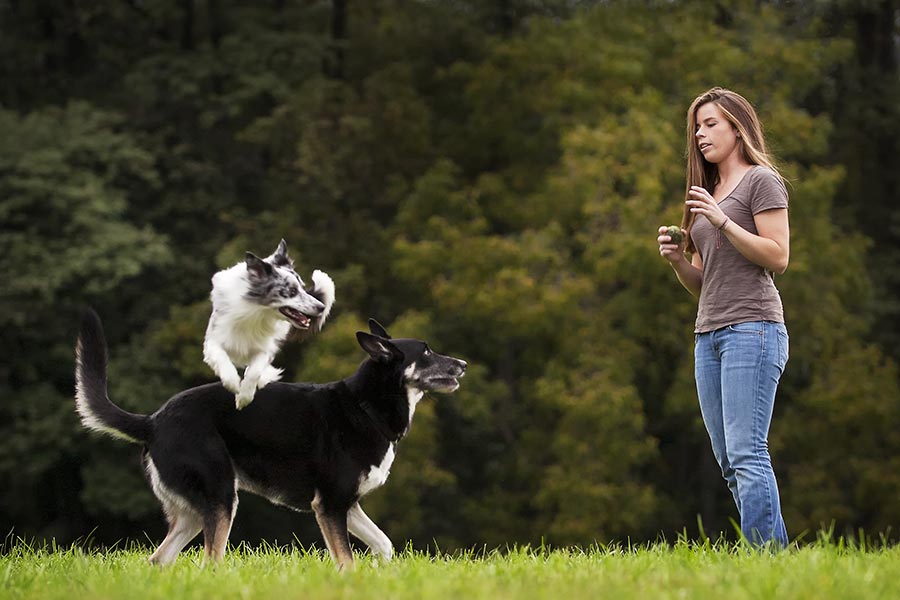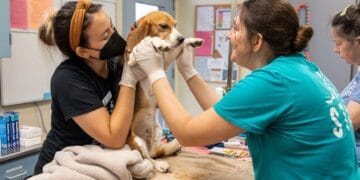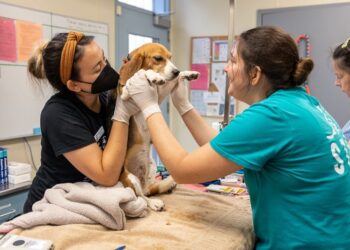Socialization is the single most important factor determining your pet’s behavior and happiness.
The Critical Window—Timing is Everything
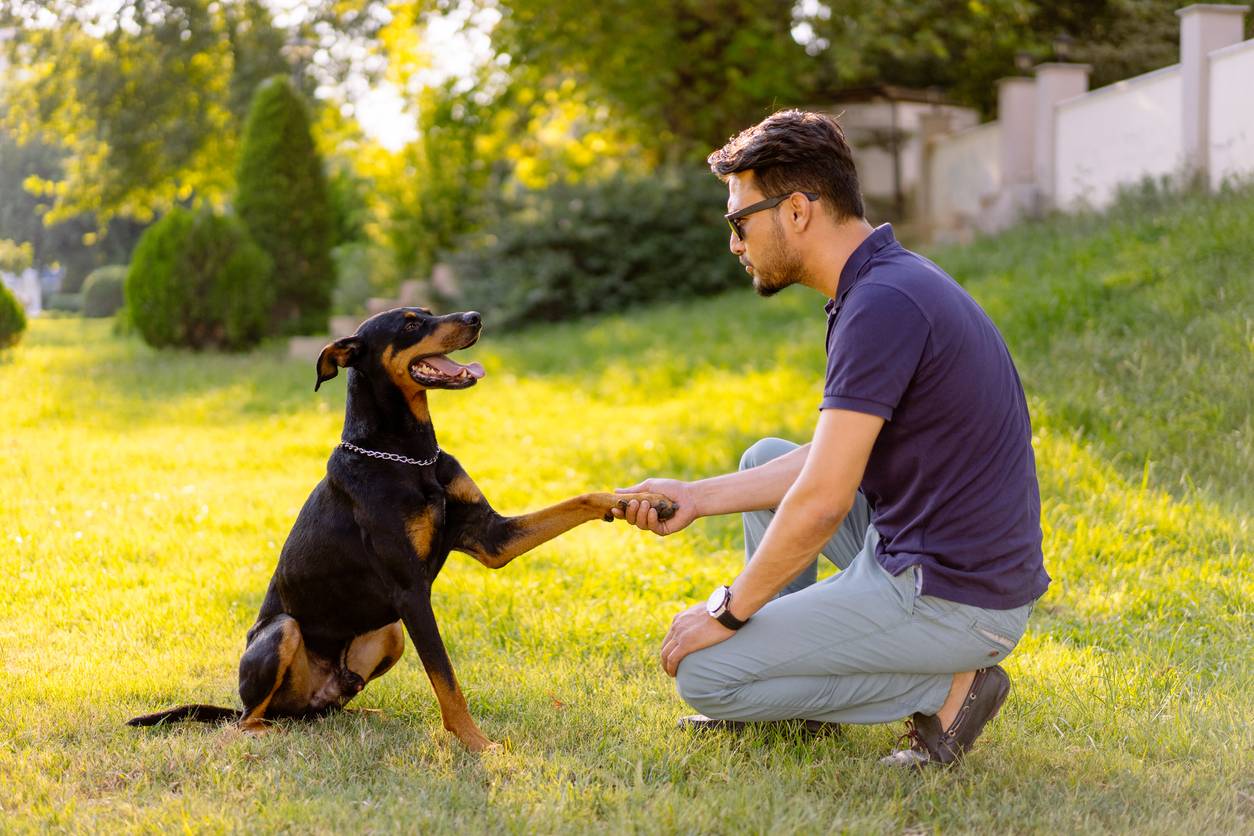
The first few weeks of a pet’s life are a sensitive, short window when their brains are most open to new experiences.
A. Puppies: The Critical Period
- A. The critical socialization window for puppies is generally between 3 and 14 weeks of age.
- B. During this time, the puppy’s brain is rapidly forming neural pathways that dictate their perception of the world.
- C. Positive exposure during this period greatly reduces the likelihood of fear, anxiety, and aggression in adulthood.
- D. Lack of proper socialization before 14 weeks can lead to lifelong behavioral challenges that are difficult, if not impossible, to fully reverse.
B. Kittens: The Sensitive Period
- A. The sensitive socialization period for kittens is even shorter, typically running from 3 to 9 weeks of age.
- B. Early exposure is key for kittens to become comfortable with human handling and diverse environments.
- C. Kittens handled and exposed to multiple people during this window are far more likely to be friendly and less fearful later in life.
- D. Even if the kitten is fearful, short, positive interactions are vital during this brief time.
C. The Safety Paradox
- A. Many owners hesitate to socialize young puppies and kittens due to incomplete vaccination schedules.
- B. The risk of behavioral issues (euthanasia due to aggression is a leading cause of death in young dogs) often outweighs the small risk of illness in controlled settings.
- C. Consult your veterinarian for a safe socialization plan, such as attending specialized puppy classes or socializing with only fully vaccinated adult dogs in private homes.
The Three Pillars of Socialization
Effective socialization is more than just meeting other animals; it’s about positive exposure to different people, environments, and handling.
A. People and Handling
- A. Your pet must learn that all types of humans are safe and fun.
- B. Introduce your pet to people of various ages, heights, genders, and ethnicities.
- C. Expose them to different uniforms, accessories like hats, sunglasses, or walking canes.
- D. Practice gentle handling, touching their paws, ears, tail, and mouth, rewarding them heavily to prepare them for vet and grooming visits.
- E. Ask new people to ignore your pet initially, allowing the pet to approach when ready, often making the interaction less intimidating.
B. Places and Environments
- A. A well-socialized pet should be comfortable with the sights, sounds, and smells of the world they inhabit.
- B. For dogs, this means short, calm visits to places like parks (carried, if not fully vaccinated), pet stores, and quiet street corners.
- C. Expose them to novel surfaces, such as tile, carpet, wood, grass, and pavement, making sure the experience is positive with treats.
- D. Introduce them to common loud noises from a distance, like doorbells, vacuums, fire truck sirens, or skateboards, rewarding them for staying calm.
- E. For cats, exposure includes riding calmly in a carrier, handling by non-family members, and being comfortable with the vacuum or blender noise.
C. Other Animals
- A. Socialization with other animals must be done carefully to ensure positive, non-threatening experiences.
- B. Puppies should meet calm, friendly, fully vaccinated adult dogs that are known to be socially adept and patient.
- C. Avoid dog parks or uncontrolled group meetings where the risk of an aggressive encounter is too high during the critical learning phase.
- D. Kittens benefit from meeting calm, gentle dogs and other friendly, healthy cats to learn appropriate boundaries and play behaviors.
- E. Always supervise interactions and remove your pet immediately if they show signs of fear or are being overwhelmed or bullied.
Strategies for Fear and Reluctance
Socialization must be a positive, stress-free process; forcing interactions can cause lifelong fear.
A. Positive Reinforcement and Counter-Conditioning
- A. Rewards are the Key: Use high-value treats to create a positive emotional association with new people, pets, or environments.
- B. Counter-Conditioning: This technique changes a pet’s negative emotional reaction into a positive one by pairing the fearful stimulus (a stranger, a loud truck) with a highly desirable reward (cheese).
- C. Desensitization: Gradually expose the pet to the fearful stimulus at a distance or intensity where they remain calm and relaxed.
- D. The Retreat Option: If your pet shows fear signs (tail tucking, lip licking, flattened ears), immediately increase the distance or remove them from the situation.
- E. Never Punish Fear: Scolding or forcing an anxious pet only increases their fear and can lead to aggression as a defensive measure.
B. Recognizing Stress Signals
- A. Learn your pet’s subtle communication cues to intervene before fear escalates.
- B. Dog stress signs include yawning (when not tired), lip licking, excessive panting, tail tucking, and rigid body posture.
- C. Cat stress signs include flattening their ears, tail twitching, excessive grooming, or hiding.
- D. Respecting these signals by giving them space builds trust and confidence.
C. Socializing the Adult or Fearful Pet
- A. It is never too late to begin socialization, but the process must be much slower and more carefully managed than with a puppy or kitten.
- B. Focus on quality over quantity: one positive, brief exposure is better than ten rushed, stressful ones.
- C. Seek guidance from a certified professional dog trainer (CPDT-KA) or a veterinary behaviorist (DACVB) for severe cases of fear or reactivity.
- D. Use high-value rewards constantly to change their emotional response to past triggers.
- E. Management is key: sometimes, the safest socialization strategy for a highly reactive adult dog is simply managing the environment to avoid confrontations.
Structuring the Socialization Experience
Structured, short lessons are far more effective than overwhelming, prolonged exposure.
A. The “Rule of Seven” Analogy
- A. Aim to expose your puppy or kitten to seven new, positive experiences per week during their critical period.
- B. Experiences should include meeting seven new, calm people, handling seven different textures, hearing seven different sounds, and seeing seven different environments.
- C. The goal is variety and neutrality, ensuring the pet learns that the world is a non-threatening, diverse place.
B. Integrating Socialization with Training
- A. Combine short training sessions with socialization opportunities for efficiency.
- B. Ask your dog to “Sit” or “Watch Me” when a new person approaches, rewarding them for remaining calm and focused on you.
- C. This helps the pet associate new, potentially distracting situations with the comfort and predictability of known commands and treats.
C. Continuing the Effort
- A. Socialization is not something that ends when the critical window closes; it must continue throughout the first 9 to 12 months of life.
- B. Continued positive exposure reinforces the lessons learned early on and prevents regression during fear periods (often around 5-7 months of age).
- D. Regularly schedule short “field trips” to new, calm locations to keep their coping skills sharp.
Conclusion
Socialization is truly the paramount responsibility of every pet owner, shaping a young animal into a confident, well-adjusted companion for life.
It must be approached with deliberate strategy, recognizing the brief, critical developmental windows in puppies (3-14 weeks) and kittens (3-9 weeks) where the brain is most receptive.
Proper socialization is a deliberate process of positive exposure to various people, environments, sounds, and objects, always using high-value rewards to create a fundamentally positive emotional association with novelty.
The strategy necessitates prioritizing positive experiences over volume, immediately stopping any interaction that causes signs of fear or stress to prevent the creation of a negative emotional scar.
For dogs, this means structured, parallel walks on neutral ground and meeting only known, calm, fully vaccinated adult dogs to prevent overwhelming or traumatic events.
For cats, it means gentle, frequent handling by diverse people and comfortable exposure to household noises and confinement in a carrier.
Training is an indispensable component, utilizing counter-conditioning to pair scary stimuli with delicious treats, thereby changing a fearful response into an optimistic expectation.
Even for adult or fearful pets, slow, professional desensitization and management can improve their comfort and quality of life, although the process requires more patience.
Ultimately, successful socialization leads directly to a dog or cat that is resilient to stress, happy in any environment, and a safe, joyful member of the community.
This lifelong commitment ensures that your pet’s life is defined by curiosity and confidence rather than anxiety and fear.

